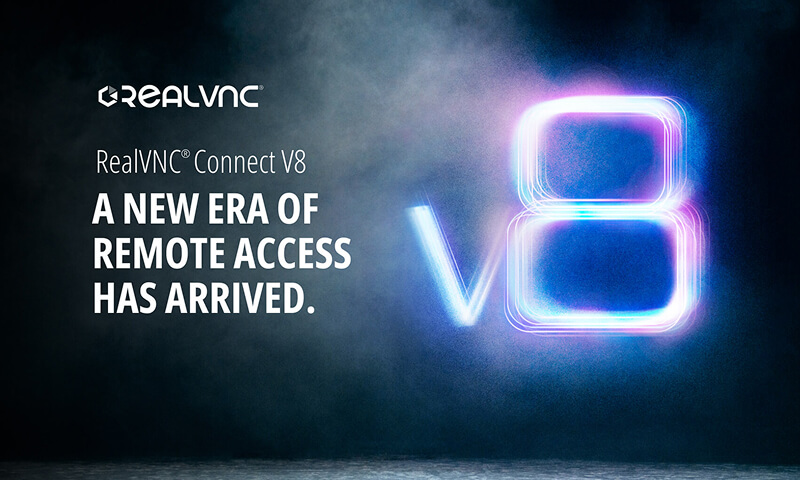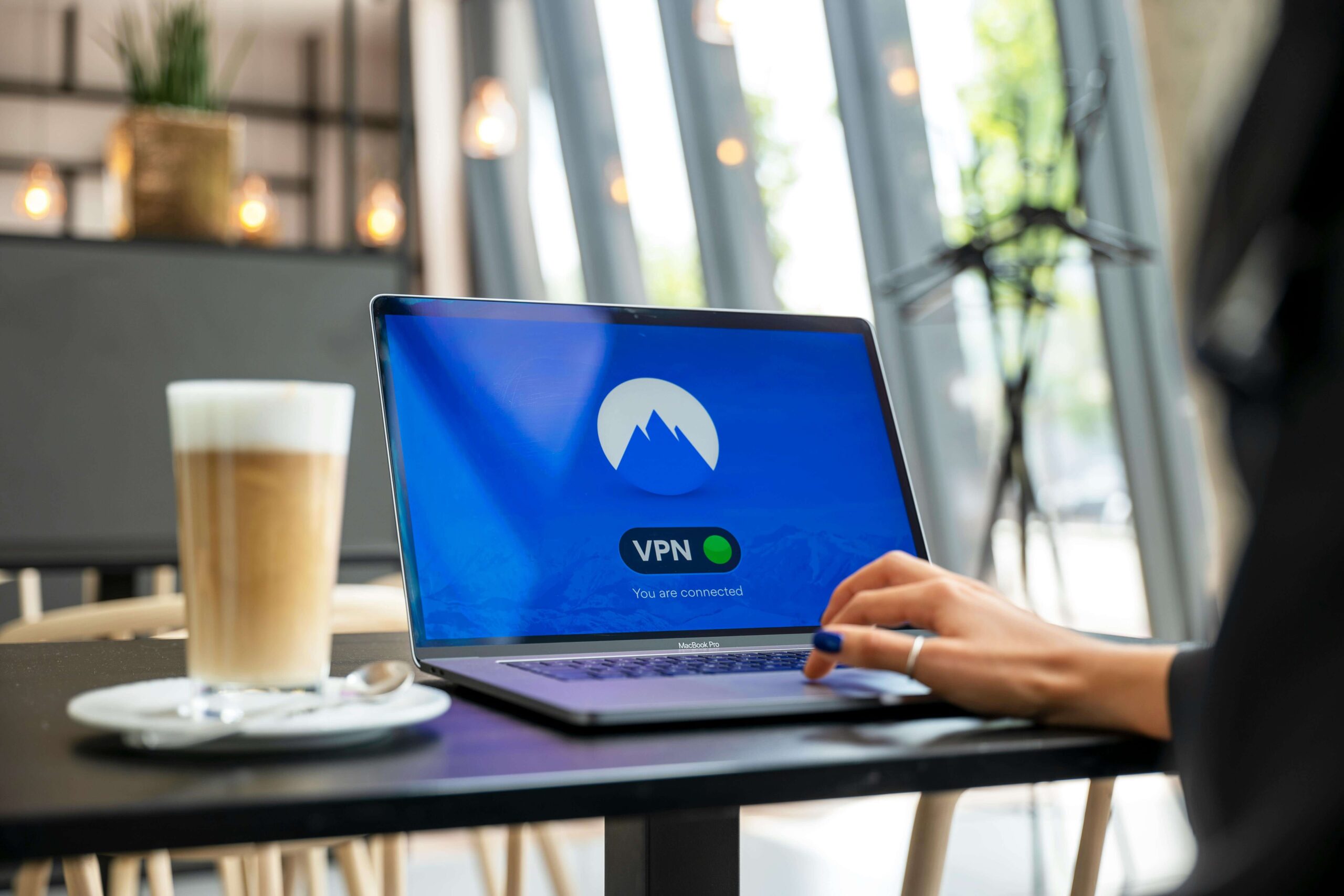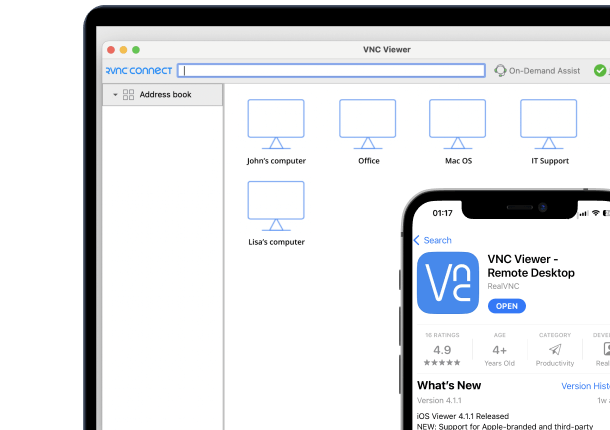In the corporate IT world, few acronyms sound similar yet serve different functions than VNC and VPN. Both are in some way tied to remote access, but apart from that, their roles diverge sharply.
Virtual Network Computing (VNC) allows you to take control over a remote desktop, while a Virtual Private Network creates a secure tunnel into a private network for secure communication.
As they address different layers of connectivity, the comparison often creates a fair share of uncertainty. Leaders and architects in charge of deciding remote access policies need to decide whether staff should interact with a remote computer directly (VNC) or securely connect to an entire infrastructure (VPN).
This article examines how each technology works, outlines the security risks involved with adopting either, and identifies the ideal use cases. By the end, the differences will be clear enough to guide confident adoption.
What is Virtual Network Computing (VNC)?
Virtual Network Computing is best described as a graphical desktop sharing system. It’s a technology that allows a person to view and control another desktop on a remote computer as if they were sitting right in front of it.
VNC technology relies on the Remote Frame Buffer (RFB) protocol. RFB transmits graphical screen updates from the VNC server hosted on the target PC to a VNC client, allowing the user to view and interact with it fully. At the same time, the server receives keyboard and mouse events, translating every keystroke and movement into actions on the remote machine.
The design is based on a client-server model. One computer can act as the host, while the other acts as the viewer. The whole approach is completely platform independent, meaning a server running Windows can host a VNC session to a client running Linux, and vice versa.
RealVNC pioneered this protocol over 20 years ago and later advanced it by adding modern encryption methods and authentication. Through RealVNC Connect, enterprises gain not only the ability to remote control desktops and servers but also a secure remote access platform with enterprise-grade features from the first connection.
What is a Virtual Private Network (VPN)?
Virtual Private Networks, largely popularized by privacy advocates, extend a private network across a public network. VPNs create a secure channel where internet traffic is encapsulated, forming a VPN connection between a VPN server and the user’s device.
This process relies on tunneling and encrypted connections, which allow remote employees to gain a secure connection to a company’s internal network while protecting sensitive information sent through it.
The VPN protocols you’re most likely to see in use on corporate networks are IPsec, L2TP, and PPTP. Newer alternatives to these protocols provide a faster and more privacy-focused experience and include OpenVPN, WireGuard, VLESS, and Shadowsocks.
VPNs are implemented in different ways, and the user’s external IP address changes depending on the configuration:
- Remote Access VPN (Client-Server): The client connects to a central VPN server (typically a corporate network). The user’s IP address appears as the server’s location, masking the user.
- Site-to-Site VPN: Entire networks connect to each other. Users inside appear to have the external IP address of the local network gateways, even when accessing remote resources.
- Cloud VPN: A cloud service handles the tunneling. Users connected to it will appear to be hosted by the cloud service IP addresses.
The difference between business and individual VPN usage typically comes down to requirements. Businesses use VPNs to access corporate networks remotely, while individuals use them to bypass censorship, access restricted services, and protect their privacy online.
The Key Differences Between VNC vs VPN
The comparison between VNC vs VPN starts with their designed purpose. VNC focuses on remote access to servers and desktops, while a VPN secures access to an entire network. Both fall under the category of remote access, but they address completely different requirements.
From a purely architectural point of view, VNC operates at the application layer using the remote frame buffer protocol. A VNC connection allows users to take control of a remote computer by transmitting their local mouse clicks, movements, and keyboard strokes and then receiving the corresponding graphical screen updates from the remote PC.
VPNs function at the network layer by creating a secure, encrypted tunnel through which all internet traffic is carried between the user’s device and a VPN server.
Functionality also differs. VNC gives visibility into a user’s desktop and enables direct interaction with the applications running on it. VPNs redirect traffic so users appear to be directly connected to a remote environment. This extends secure access to the databases, file servers, and internal systems located on the remote network (but inaccessible from any public-facing network).
Performance considerations are also distinct. VNC can be bandwidth-intensive, as the graphical screen updates are constantly transmitted. VPNs may reduce an operating system’s throughput or slow performance when many users are connected at the same time. Modern VNC solutions like RealVNC Connect have largely resolved these performance issues by supporting high-speed streaming. RealVNC Connect delivers a smooth and responsive remote desktop experience even when working remotely across high-latency connections.
Both technologies enable powerful remote access methods but come with strong risks if poorly managed and implemented. VNC connections require strong authentication and reliable encryption to keep session information private.
VPNs can also create common security risks if the tunnel is misconfigured. RealVNC Connect mitigates these concerns by adding enterprise-grade protections such as end-to-end encryption (E2EE), authentication that works with your existing systems, and brokered cloud connections for remote employees.
Use Cases: When VNC is the Better Fit
When the goal is to operate a remote desktop rather than grant access to an entire network, VNC is the preferred option. IT teams often rely on it for support and troubleshooting, where they need to interact with a remote computer exactly as if they were physically present. This is especially effective for fixing the configuration or installing software on a PC at a remote location.
VNC also works well for remote employees who need to reach their work computer from home. The technology provides direct access to a user’s desktop, including all the applications running on it that they need for work. Because it’s cross-platform, staff can use their personal devices, such as a MacBook Pro, to access a Windows PC at work without any barriers.
Organizations that want to support remote employees securely often choose solutions such as RealVNC Connect, which adds enterprise security to these everyday use cases.
Use Cases: When VPN is the Better Fit
If your organization needs remote team members to access an entire network (and its resources) rather than just a single remote computer, then a VPN is a better fit. Businesses often deploy it so staff can reach shared databases, internal applications, and office printers inside the corporate private network.
VPNs also protect communications across a public network, creating a secure tunnel that shields sensitive information from being intercepted, even on public WiFi. For corporate networks with many employees, using a VPN centralizes access policies and adds strength to overall privacy.
Traffic routed through a VPN follows the rules of the corporate private network, giving administrators full control of the internet connection. This model is typically adopted to comply with NIST VPN security guidelines and balance security, scalability, and compliance.
Combining VNC and VPN for Secure Remote Access
Many enterprises use both technologies together to provide secure remote access. A VPN builds a secure channel between the user and the corporate network, while the VNC connection carries the desktop traffic inside that tunnel. The combination of both technologies strengthens security for companies that demand full data protection.
In corporate practice, the VPN protects the network perimeter, and VNC supplies graphical control of a remote desktop within that environment. This layered strategy improves secure communication while still maintaining direct access to applications and files on the host machine.
Although platforms like RealVNC already employ strong encryption and authentication, pairing them with a VPN significantly reduces exposure over public networks. It also means companies are aligned with strict data compliance requirements. Enterprises that require consistent, secure remote access often adopt RealVNC Connect as a part of this combined approach.
RealVNC’s Position in VNC Technology
RealVNC originated the VNC and RFB protocols and continues to advance them to this day with modern encryption methods, proven through independent audits. We also support Zero Trust principles with every remote VNC session using verified secure channels before any data is exchanged.
Organizations worldwide depend on RealVNC Connect to securely connect across diverse platforms. The solution provides secure remote access whether teams are running Windows, Linux, or macOS at home and in the office.
Enterprises value RealVNC Connect’s ability to protect sensitive data, enforce granular session control, and deliver a constant, high-performance experience for both administrators and users. These enterprise-grade features and more have reinforced RealVNC’s reputation as the reference point for all enterprise-level VNC.
Conclusion: Making the Right Choice
The choice between VNC and VPN depends on whether your priority is secure remote access to a system or complete remote network connectivity. RealVNC Connect offers both flexibility and strength.
Whether your organization already maintains a corporate VPN or simply needs reliable remote desktop control, RealVNC integrates smoothly. Contact our experts or download RealVNC Connect to explore how it can align with your enterprise requirements.
Frequently Asked Questions
Can VNC and VPN be used together?
The two technologies, VNC and VPNs, work together seamlessly to provide complete security. VPN establishes a protected network connection through which VNC enables remote desktop management. The combination of these technologies provides improved protection for situations requiring secure remote access.
Which is more secure: VNC or VPN?
Both technologies offer strong security when properly implemented. RealVNC Connect and VNC use application-level encryption and authentication to protect data, while VPN secures network connections and traffic. The security level depends on the implementation’s quality and the use case’s specific needs.
Do I need a VPN if I have VNC?
Not necessarily. RealVNC Connect and other modern VNC solutions provide built-in security features that allow secure operations through internet connections. VPN provides extra security protection, but it does not always need to be used for secure VNC deployments.
Which technology is easier to set up and use?
The setup process for VNC remote desktop access remains straightforward, but VPN requires additional network configuration steps. RealVNC Connect offers straightforward installation and connection procedures that reduce technical challenges for users.
Can VNC work without internet connectivity?
The VNC protocol functions through local networks without requiring internet access, which makes it suitable for isolated environments. A VPN needs internet connectivity to create secure tunnels between distant locations.









